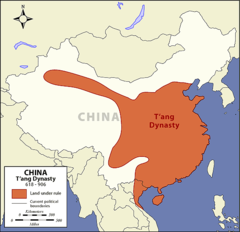| 9226088298 | Animal Husbandry | An agricultural activity associated with the raising of domesticated animals, such as cattle, horses, sheep, and goats. | | 0 |
| 9226088299 | Cash Cropping | Planting large amounts of profitable crops for mass production and sell. | | 1 |
| 9226088300 | Corporate Agriculture (Agribusiness) | System of food production involving everything from the development of the seeds to the marketing and sale of food products at the market. | | 2 |
| 9226088301 | Commercial Crops | A crop grown for direct sale rather than for livestock feed. | | 3 |
| 9226088302 | Domestication of Plants | Domesticating plants for human use, one of the first steps to a full fledged agricultural economy. | | 4 |
| 9226088303 | Double Cropping | Planting and harvesting a crop on a field more than once a year. | | 5 |
| 9226088304 | Fallow | When farmers grow crops in a clear field for only a few years until the soil nutrients are depleted. The farmers then have the soul empty for a few years so the nutrients in the soil can be restored; uncropped land. | | 6 |
| 9226088305 | GMOs | Foods that are mostly products or organisms that have their genes altered in a laboratory for specific purposes, such as disease resistant, increased productivity, or nutrients value; Genetically Modified Organisms. | | 7 |
| 9226088306 | Intensive Farming | Subsistence agriculture in which farmers must expend a relative large amount of effort to produce the maximum feasible yield from a pared of land. | | 8 |
| 9226088307 | Labor-intensive Crops | Includes fruits, garden vegetables, herbs, and anything requiring constant tending or wielding. | | 9 |
| 9226088308 | Labor-intensive Animals | Animals that require constant tending, includes dairy cow and poultry for eggs. | | 10 |
| 9226088309 | Monoculture | Dependence on a single agricultural commodity. | | 11 |
| 9226088310 | Mechanization | In agriculture, the replacement of human labor with technology or machines. | | 12 |
| 9226088311 | Market Gardens | Small scale production of fruits, vegetables, and flowers as cash crops sold directly to local consumers, Distinguishable by the large diversity of crops grown on a small area of land, during a single growing season. Labor is done manually. | | 13 |
| 9226088312 | Primary Economy | Any economic activity pertaining to the collecting, harvesting, and obtaining of raw materials. | | 14 |
| 9226088313 | Plantation Agriculture | Raising a large amount of a 'cash crop' for local sale or export. | | 15 |
| 9226088314 | Suitcase Farmers | A suitcase farm is a farm in which no one reside permanently, they go against the grain of traditional farming. In the US migrant workers provide a cheap, abundant labor source; they work on the farm during the day and leave at night. There is no residence on the site. | | 16 |
| 9226088315 | Spring Wheat | Wheat planted in the spring and harvested in the late summer. | | 17 |
| 9226088316 | Sustainable Yield | Rate of crop production that can be maintained over time. | | 18 |
| 9226088317 | Transhumance | Movement of animal herd to cooler highland areas in the summer to warmer lowland areas in the winter. | | 19 |
| 9226088318 | Winter Wheat | Wheat plated in the fall and harvested in the early summer. | | 20 |
| 9226088319 | Von Thunen Model | Theory that a commercial farmer wull decide which crops to grow and which livestock to raise depending on the proximity to market. |  | 21 |
| 9226088320 | Green Revolution | An outgrowth of the 3rd agricultural revolution, this effort began in the 1940s and developed new strains of hybrid seeds and fertilizers that dramatically increased the crop output possible from each farm. | | 22 |
| 9226088321 | Communes | A group of people living together and sharing processions. | | 23 |
| 9226088322 | SE Asia domesticated what? | Yams, Taro Root, Bananas, palm oil, cattle, sheep, goats | | 24 |
| 9226088323 | Western Africa domesticated what? | Millet(China), Sorghum | | 25 |
| 9226088324 | S. Mexico domesticated what? | squash, beans, cotton, Maize(Corn), | | 26 |
| 9226088325 | SW Asia domesticated what? | Wheat, Barley, Rice(India) | | 27 |
| 9226088326 | 1st Agric Revo Location | Nile River Valley/Fertile Crescent | | 28 |
| 9226088327 | 1st Agric Revo Change | Nomadic herders to sedentary lifestyle and intentional farming | | 29 |
| 9226088328 | 1st Agric Revo Impact | Birth of civilization
Birth of urban areas
Birth of government
Birth of class structures(social stratified)
Before this egalitarian
Created irrigation
Created farmers,slaves, government officials, merchants
Surplus of food
Led to writing
Began trading which led to system of defense
Towns located on high ground(acropolis) and water | | 30 |
| 9226088329 | 2nd Agric Revo Location | England, Denmark, Netherlands | | 31 |
| 9226088330 | 2nd Agric Revo Sustained by... | Mechanical reaper
Combustible engine
Seed drill
Railroad
Refrigeration
Artificial feed
New banking practices | | 32 |
| 9226088331 | 2nd Agric Revo Before I.R | Improved methods
Improved plows and draft-animals
(Leesdale and ox)
New crops
Potato and Corn since both can be grown in marginalized land(Not-so fertile land)
Government policies
British Enclosure Act
Crop rotation and consolidated/fenced off land
In same year and plot, rotate crops to maintain soil fertility
Improved soil fertility
Canals | | 33 |
| 9226088332 | 3rd Agric Revo Defintion | new strains with higher yields through genetic manipulation to increase yield through the use of herbicides and fertilizers | | 34 |
| 9226088333 | How to increase GMOs | 1. Purchase artificial fertilizer
Chemicals
2. Irrigation system
3. Purchase herbicides/pesticides
4. Purchase machines to keep up with production
5. Need a receptive environment
6. Need receptive commodity markets
7. Barriers to implementation
Poor, unreceptive environment river water | | 35 |
| 9226088334 | Shifting Cultivation Location | Subtropics and Tropics | | 36 |
| 9226088335 | Shifting Cultivation Steps and Characteristics | Steps:
Clear land
Plant land
Fallow(not planting anything so soil can replenish itself)
Come back to land when it is full of nutrients
Characteristics:
Low quality land
Low population density | | 37 |
| 9226088336 | Slash-and-Burn is also know | Patch agriculture
Milpa(Yucatan peninsula)
Swidden(Indonesia)
Chitemene (Nambia)
Ladang(Old english meaning to farm) | | 38 |
| 9226088337 | Nomadism | Dry Areas
Same climate as livestock ranching(commercial farms in MDCs)
Marginalized land | | 39 |
| 9226088338 | Commercial Farming Positives | Increase yield
Keeps food costs low | | 40 |
| 9226088339 | Commercial Farming Negatives | Use of chemicals
Human health
Younger age of puberty
Cancer increase
Environment
Rainforest destruction
Desertification
Rise in sustainably sourced farming
Local and organic
Blue zone where business collaborate to show thi | | 41 |
| 9226088340 | Livestock Ranching | Raising of domesticated animals for food or items like leather
Climate: Dry
Growing industry
As countries develop, meat eating increases
Standard of living increases
Not near market
Bulk-reducing industry | | 42 |
| 9226088341 | Dairying | Climate: Cold
Perishable
Area surrounding dairying is milk shed
Closer to market
North Latitude
Bulk-gaining
Bottling fluid | | 43 |
| 9226088342 | Mixed livestock and grain | Raise domesticated animals and growing feed | | 44 |
| 9226088343 | Commercial Grain Farming | Wheat belt
Bread-basket US
Corn belt | | 45 |
| 9226088344 | Market Gardening | Items people garden
Near market since items are perishable
Suitcase farms
Rely on migrant labor | | 46 |
| 9226088345 | Mediterranean | Dry summers
High rainfall needed
France, Spain, Greece, North Africa, Australia, Chile, California
Produce grapes, citrus, etc.
Wine production | | 47 |
| 9226088346 | Plantation farming | Tropics
In LDCs
Owned by MDCs
Cash crops | | 48 |
| 9226088347 | Cash Crop Examples | Worldwide Cotton
Rubber
Amazon
Rice
India
Sugar from Caribbean | | 49 |
| 9226088348 | Coffee | Ethiopian Origin
US #1 consumer
Central America and Africa produce it | | 50 |
| 9226088349 | Tea | Most production in Asia
China
British own most tea plantations | | 51 |
| 9226088350 | Illegal Drugs | Marijuana, Poppy seeds
Core are demanders
Periphery grows them
Takes processing | | 52 |
| 9226088351 | What two factors influenced Von Thunen model? | Perishability and Transport Costs | | 53 |
| 9226088352 | Von Thunen ring outside city(1) | Market gardening/dairying/feedlot
Feedlots fatten livestock before slaughter
Skinny before sent near market | | 54 |
| 9226088353 | Von Thunen ring (2) | Forestry and growing feed grains
Wood: Fuel and building materials
Feed: Food for livestock | | 55 |
| 9226088354 | Von Thunen ring (3) | Food grains and cash crops | | 56 |
| 9226088355 | Von Thunen ring (4) | Livestock ranching
Low land cost and marginalized land | | 57 |
| 9226088356 | Von Thunen assumptions | Flat terrain---Similar climate/soil---no barriers to transportation | | 58 |
| 9226088357 | Von Thunen factors that decrease the model | Refrigeration
Food preservation
Global markets/corporate decision making
New alternatives for fuel
New ways grains are used | | 59 |
| 9226088358 | Horizontal integration | Companies buy out companies
Allows for them to set prices
No quality for consumers
Aka Monopoly
Laws created in 1900s that makes monopoly illegal
Multiple like industries | | 60 |
| 9226088359 | Vertical integration | One industry that eliminates the middleman
Control supply chain
Food is homogenous
Farm production becomes aggregated
Create more commercial agricultural
No more small farms
Harmful effects on people and environment | | 61 |
| 9226088360 | Double cropping | Harvesting twice in one year
Employ crop rotation | | 62 |
| 9226088361 | Triple cropping | Harvesting 3 times in one year
Employ crop rotation | | 63 |
| 9226088362 | Vertical farming | Urban, crowded, squatter areas
Takes up less space | | 64 |
| 9226088363 | Agrarian-based society | Based on agriculture
Mesopotamian, River valley, Primary sectors | | 65 |
| 9226088364 | Animal husbandry | Care of domesticated animals | | 66 |
| 9226088365 | Open-lot farming | Type of subsistence farming
Village farms the land
Ejiado | | 67 |
| 9226088366 | Subsistence crop | Food crops used only by family or local market trading | | 68 |
| 9226088367 | Organic Farming | o extracts farmers from big corporations
o environmental=reduce synthetic chemicals in soil/water
farming and ranching without the use of herbicides, pesticides, growth hormones, and other synthetic inputs.
o sold in 54% of US grocery store | | 69 |
| 9226088368 | Truck Farms | Farm where farmers produce fruits for the market
Use mechanization to produce large quantities of fruits and veggies | | 70 |
| 9226088369 | Staple Grains | wheat, barley, rye, maize, or rice; potatoes, yams, taro, arrowroot, or cassava | | 71 |























































































































































































